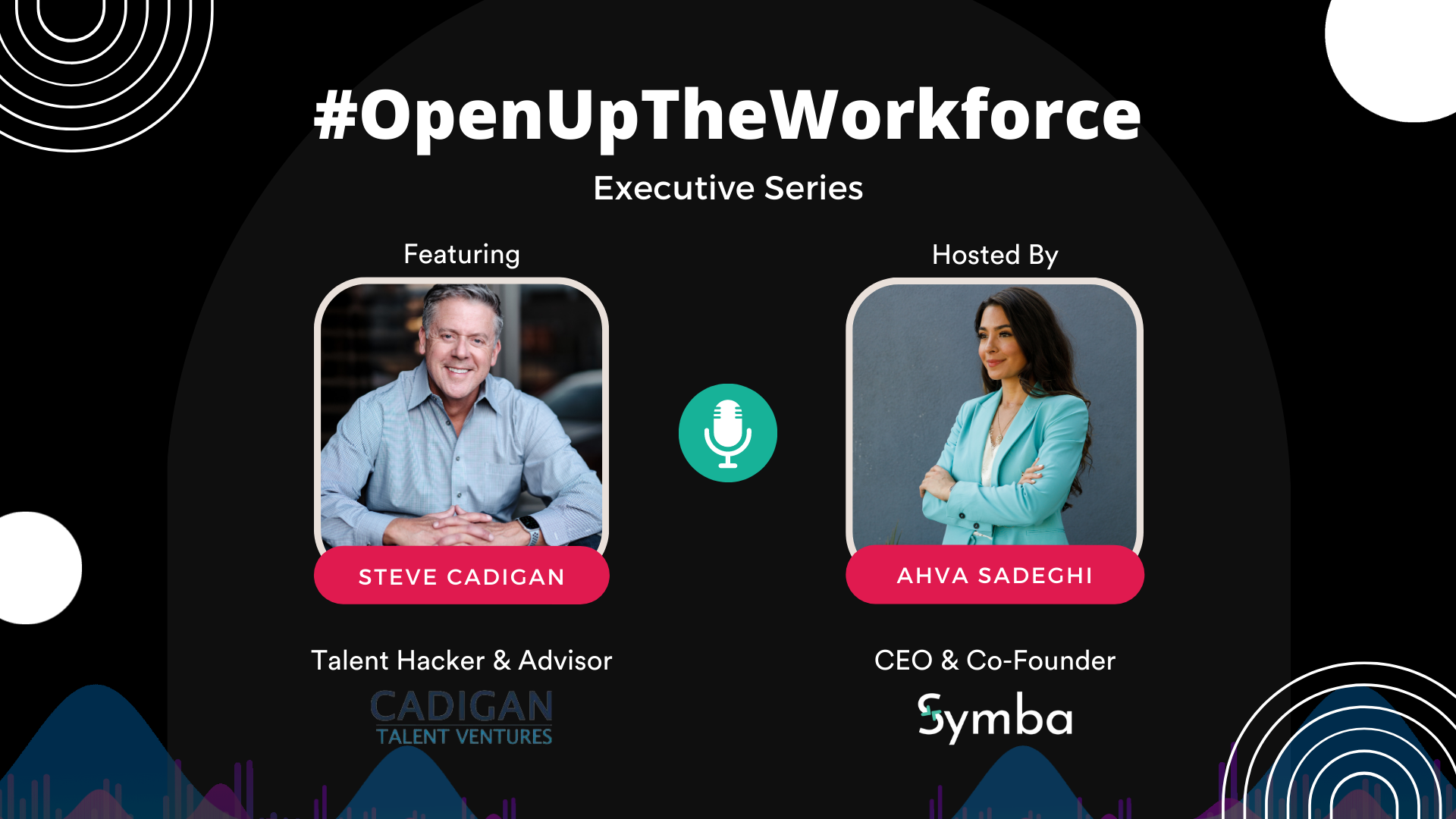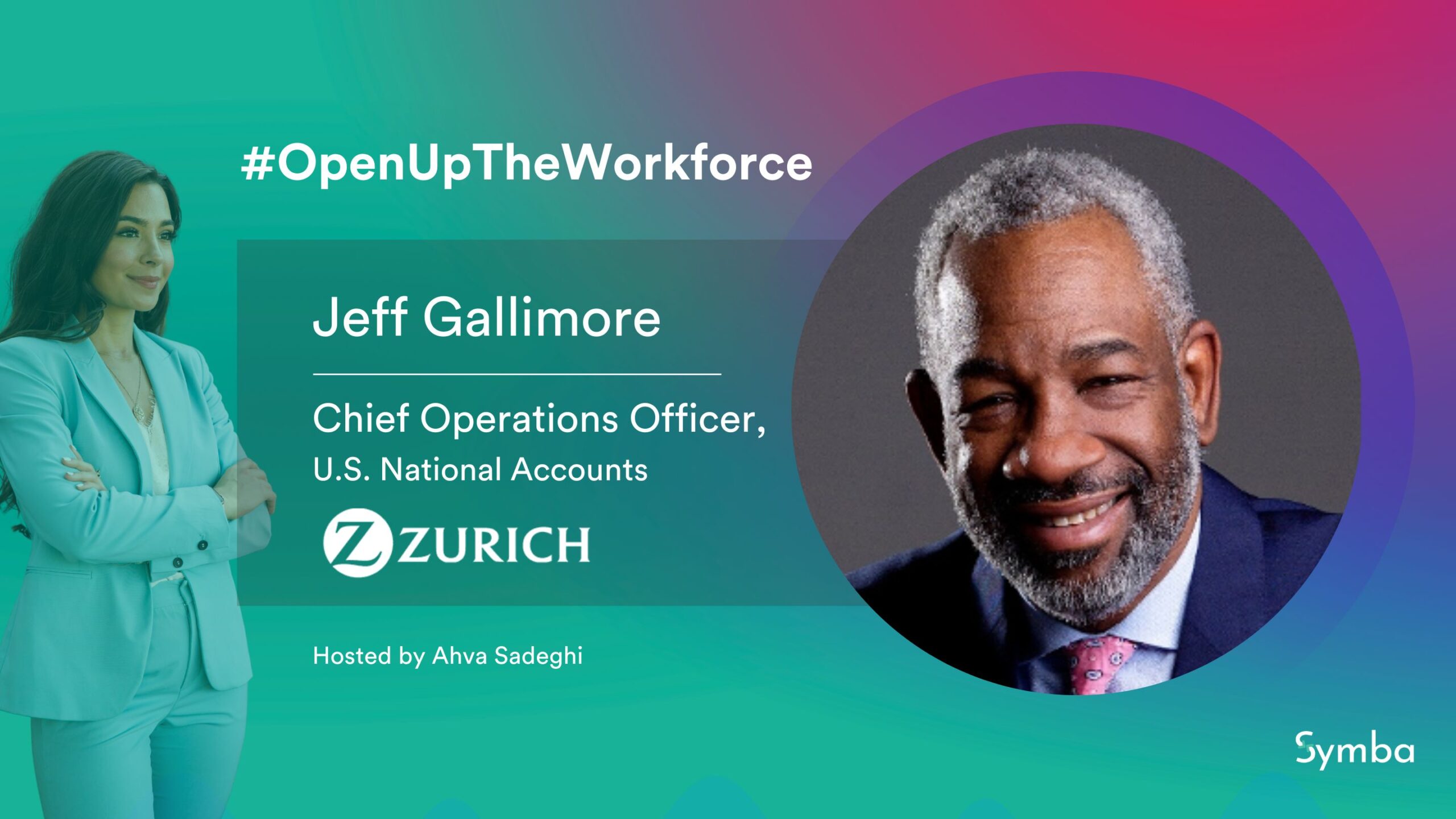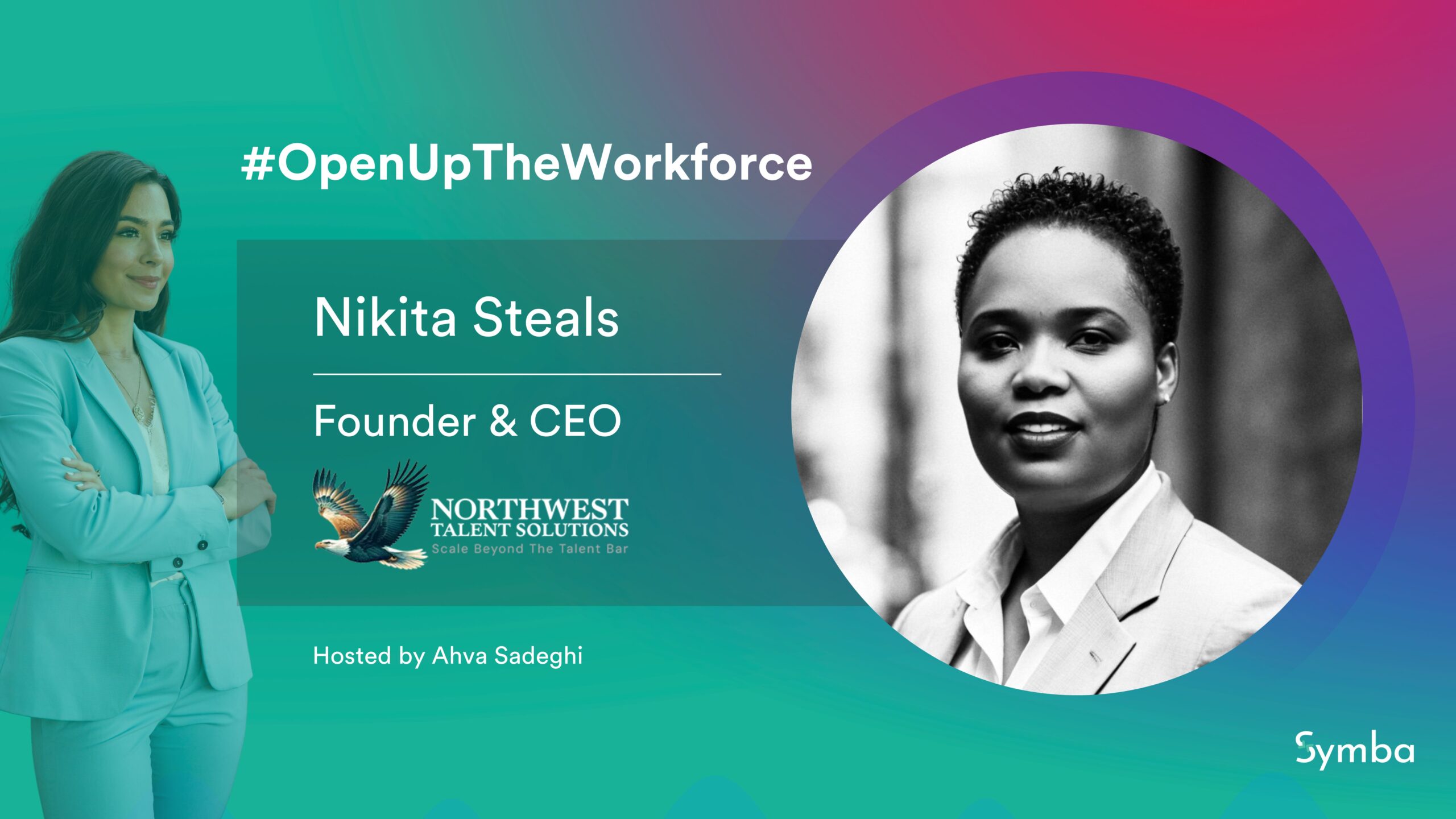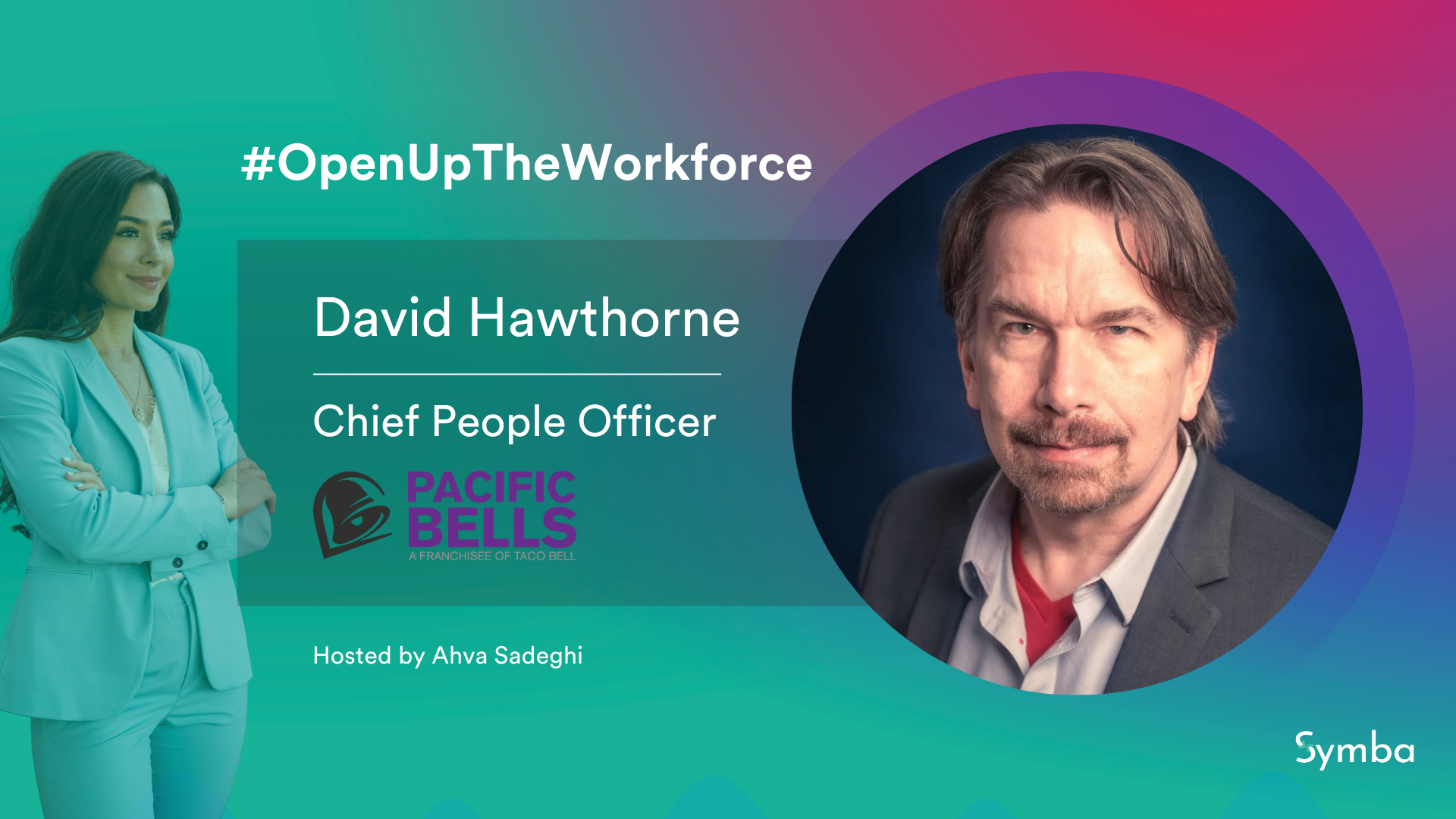Presented by Symba, #OpenUpTheWorkforce interviews feature executives advancing inclusion, diversity, and equity for the future of work. In these short audio-only episodes, we talk with the top about what it takes to develop and implement inclusive processes.
In this episode of #OpenUpTheWorkforce, Steve Cadigan, Talent Advisor and the first CHRO of LinkedIn, talks about the importance of learning how to talk about the hard stuff, the need for business transparency to build psychological safety, multi-faceted impact programming, and so much more. Listen here.
As the son of someone that preached sermons with Dr. Martin Luther King, Jr. in the 60s, Steve says, “Diversity, Equity, and Inclusion [have] been in my veins since I was born. And it was very important to my family, very important to the fabric of who I am.” DE&I have been steadfast values of Steve’s as he worked and practiced HR globally and has led a number of acquisitions around the world over the past 25+ years. Steve feels his most impactful contribution to the diversity & inclusion space was as the first CHRO of LinkedIn, helping build a platform where people and organizations could put their agenda forward to potential candidates and employers could communicate what they are doing for DE&I and how they are doing it. He shares that if you make DE&I an initiative, it probably will fail. It needs to be at the core of your business and an integral value.
When growing rapidly across many different geographies, let your employees build the culture.
Steve helped LinkedIn grow from 400 to 4,000 employees in three and a half years. He advises that companies in a high-growth phase should provide a platform for people to contribute and exercise their voices. Don’t expect to know everything and get it perfect, rather, invite candidates to come to your company and help build the culture.
What prevents organizations from developing the leaders of tomorrow?
One of the biggest challenges Steve is seeing with the businesses and leaders he works with is that the pace is so fast and the lifecycle of a business is so short, that they are less motivated to invest in employees because the business might not be there in a couple of years or the employees might leave. Business leaders are feeling this friction and should keep in mind the long-term impact of investing in their staff, how this contributes to the greater good, and how it can also lead to referrals to your business.
Look at talent development as “designing learning in the work.”
Employers need to constantly offer new experiences, new challenges, new goals and objectives, and new teams for their staff. Inviting a professor in for a 4-hour lecture won’t cut it. Steve shares, “the greatest retentive investment you can make is giving people new things they've never done before, which unlocks disproportionate energy and overperformance. And I think greater commitment.” This growth-minded environment is becoming increasingly important as technology advances and skill gaps widen. Steve expands, “We're heading towards the reality where we're going to be hiring people not based on what they know, but based on what they can learn because we know the job they're doing today is going to be different. We know they're going to need new skills. So the first thing I need to do before even considering you for this job is, can you learn, can you grow? Can you demonstrate to me a pattern of that in your past experiences?”
Multi-faceted impact programs are the future.
Cisco combined philanthropic efforts and addressed a skills gap at the same time. Through the Cisco Networking Academy, students in low-income communities around the world train to be Cisco-certified network technicians. Shout out to Tae Yoo for organizing one of the largest ICT education programs in the world, reaching over 15 million students since the program’s inception in 1997 and helping 2.9 million people get jobs since 2005.
How do you map out building a multi-faceted impact program? Start with asking your employees what they need and what would make them proud, and then triangulate that with people in different countries and departments at your organization. You can also ask your customers, advisors, and board, “what can we do?” to crowdsource answers and see which ideas get the most energy.
Teach your leaders how to talk about the hard stuff.
“The most important investment that human resource professionals can make is really coaching their leaders and their frontline managers who are touching more of the day-to-day lives of employees in the organization and helping them learn how to have hard conversations,” says Steve. Conversations about people feeling excluded or that they are being treated differently should be approached in a constructive way, rather than drawing lines, claiming the topic is too emotional, shutting down, or getting lawyers involved.
This is especially important for fostering belonging in a remote or hybrid setting. Steve recommends carving out intentional time to check in with employees, for example, when introducing a new diversity goal like that 60% of candidates must be Black. It’s hard to rally behind something when you don’t know the why. Leaders should ask, “Are you okay? What might make you resist?” and explain why the strategy is important. Don’t overlook the fact that people might feel that if others are elevated, it may be to their detriment. This creates a passive resistor. You have to include everyone in the conversation, especially those that feel they may lose some spotlight so that they don’t block it from others you’re working to shine the light on. The “why” of your explanation should not be based on guilt, but rather, that these initiatives allow the tide to rise for all, that this is an effort to build a better community and a better future for humankind.
Culture can be your competitive edge.
Developing an amazing company culture is a competitive edge that can help companies attract and retain talent when other organizations in their field are offering higher salaries, beautiful buildings, and better benefits. Steve says, “the number of people going into accounting or applying for accounting jobs has just decreased by 40 percent.” He says this may be partly due to automation and making room for technology, but pipelines are shrinking, which is a clear sign that organizations are going to have to get creative to attract more people to their professions.
What do leaders need to do to #OpenUpTheWorkforce?
Organizations need to be more open about things they traditionally weren’t putting out there, like the demographics of their employees. Leaders need to be more transparent about how they make decisions, how and why they pay what they pay, who gets promoted and why, and reveal all things that have been in the black box. This is necessary to provide psychological safety and create “an environment of high trust where people can feel like they can do their best work.”
About Steve Cadigan
Steve Cadigan is a highly sought-after talent advisor to global leaders and organizations. Steve advises a wide range of innovative organizations, including Airbnb, Intel, Salesforce, The Country Music Association, Manchester United Football Club, and the BBC. He is also regularly retained by some of Silicon Valley’s leading VC firms, such as Andreesen Horowitz, & Sequoia, as well as top Consulting firms like Deloitte, E&Y, and McKinsey.
Steve speaks at conferences and teaches in major universities around the world. His work in helping shape the culture at LinkedIn led Stanford University to build a graduate-level class around this ground-breaking work. Throughout his career, the teams, cultures, and organizations he has led have been recognized as exceptional, “world-class” performers by the Wall Street Journal and Fortune Magazine.
Before launching his firm, Steve worked as an HR executive for over 25 years at a wide range of companies and industries, including ESPRIT, Cisco Systems, Electronic Arts and capped by serving as the first CHRO for LinkedIn from 2009 through 2012, taking the company from a private firm of 400 employees, through an IPO and helping set it up to be the powerhouse that it has become today.
Today Steve serves on the Board of Directors of four companies and sits on the Advisory Board of several progressive organizations. In August of 2021 Steve published a ground-breaking book on the Future of Work titled Workquake: Embracing the Aftershocks of COVID-19 to Create a Better Model of Working. Even before its release it realized #1 on the Amazon list of Hot New Releases.
.
.
.
Are you an executive leader increasing access to jobs and wealth creation? Request to be featured and show us how you #OpenUpTheWorkforce.





